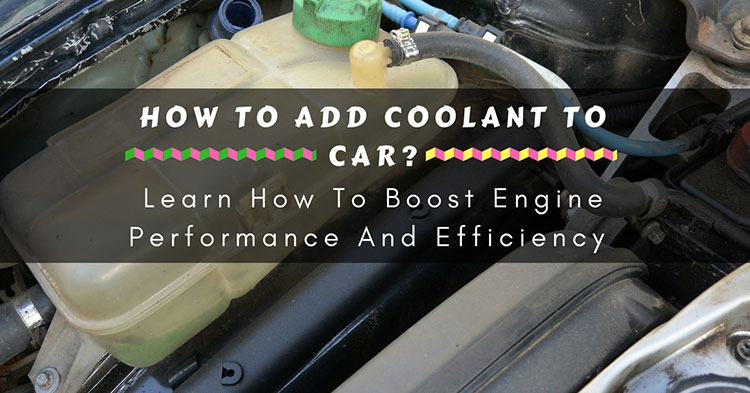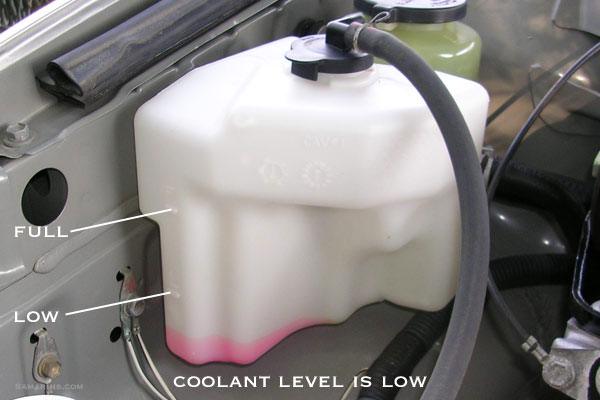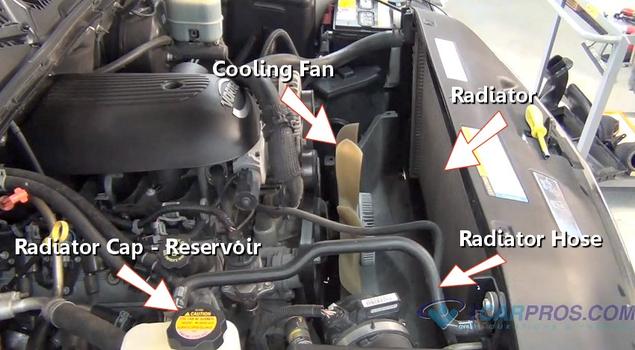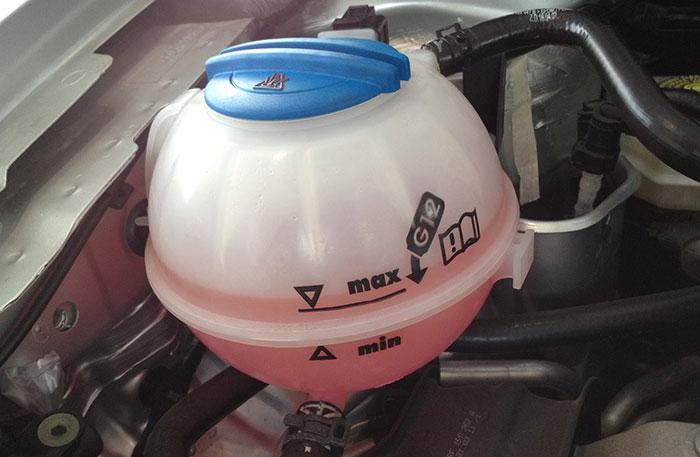
How To Add Coolant To Car? Learn How To Boost Engine Performance And Efficiency
Is your engine heating up too fast than normal? Are you concerned that the problem may be with the coolant? If while checking the coolant level, you find it needs replenishing, you can easily replace the coolant.
More...
Here is a guide on how to add coolant to car that will take you through the necessary precautions and preparations to ensure the coolant level is maintained.
Why You Need To Add Coolant Into Your Car?

Image source: actiongatortire.com
Coolant or antifreeze, as the name implies, helps to keep the engine from being overheated. It prevents the fluids in the engine from solidifying. When the coolant level decreases, it leads to faster heating of the engine. This causes signs such as
- The temperature gauge on your dashboard indicates overheating

Image source: blog.sagmart.com
- A sweet and persistent odor inside the vehicle. If you notice this, you should check your floorboard on the vehicle’s passenger side. If you find any dampness or liquid there it indicates coolant is leaking from the heater core.
- Smoke, when you open the hood
If you find any or all of these signs, they indicate a low coolant level. Check the coolant level under the hood to know whether you need to add coolant or not. Plus, you can check the intercooler of your car in order to improve fuel efficiency of your vehicle.
Let me tell you that an intercooler works as an intermediate cooling agent and makes sure that high density air is supplied to the engine. Now, let’s see how you can add coolant to your vehicle.

Image source: samarins.com
Here Is A Guide On How To Add Coolant To A Car:
Tools Needed:
The items you will require for adding the coolant include
- Towel Or Rag
Use a towel or thick cloth before you remove the cap of the reservoir because the cap will be under pressure.
- Sturdy Funnel
This is needed to pour the coolant without spilling it. Make sure it is sturdy and sufficiently large.
- Antifreeze Or Coolant
Identify the appropriate engine coolant for your vehicle as different engines need different coolants. You will find it in the owner’s manual.
Step by Step Instruction
- step 1
- step 2
- step 3
Preparation Tips Prior To Adding Coolant
Prior to filling the coolant container with fresh coolant, here are the things you should ensure:
- Purchase or locate the right coolant. Check your owner’s manual to know the right coolant or check it here to know the best coolant in the market.
- Don’t let loose clothing interfere with your task. Roll your sleeves or other loose clothing before you fill the coolant.
- Keep arms away from cooling fan. Fans tend to start automatically even while the engine is not working.
- Ensure you off the engine and put the vehicle in Neutral or Park position and set the parking brake.
Expert Tips:
- If you find the level of the coolant is below the marked range, you should add the appropriate coolant.
- You can either use a coolant alone in diluted form or use a 50/50 combination of distilled water and concentrated coolant.
Watch this video for a better understanding of the process:
Troubleshooting Tips for Checking Coolant Or Antifreeze
The main role of the radiator is to cool the engine and it does this function with the help of coolant and water. Here are the points you need to remember when you check the liquid level in the coolant reservoir.
- Rather than opening the radiator cap, you can check whether the coolant liquid is up to the full level in the reservoir.
- The recovery system of the coolant reservoir helps to keep the level full. If you find the level of liquid is not nearing the full line, you have to add the coolant.
- Open the reservoir and add the coolant in a combination of 50/50 of coolant and water.
- Some brands of coolants come in premixed form, so you have to check the label to ensure whether you need to dilute it with water or use the coolant directly.
Expert Tips:
- It is not advisable to add just water to the coolant reservoir unless in emergencies.
- In some older models, you will not find any coolant reservoir. So you have to open the radiator cap to check on the coolant and add it.
- If the fluid is colourless or rusty or you see debris floating on it, empty the system and add fresh coolant.
- If you find the coolant surface is oily and sludgy, you have to take your vehicle to the mechanic immediately. This is because oil in the coolant indicates leakage in head gasket. Auto repair services will have specialized tools to identify the leak if present.
- You should also check the hoses in the radiator for any leaks or cracks. If they appear squishy or bulgy you need to replace the hoses.
Conclusion!
Maintenance of your car is part of your ownership responsibilities. It also ensures your car keeps running smoothly and efficiently. Whether you add the coolant as a preventative measure to avoid engine issues, or due to overheating because of inadequate coolant, you will now be confident of doing it on your own with our helpful tutorial.
Our safety tips, tools list and instructions are sure to help you accomplish the task with very little effort and with complete safety. If you like our tutorial, please share it with your friends, colleagues and family on social media. And don’t forget to post your comments here.
Related Posts
Are Dodge Chargers Expensive to Fix?
Top Simple Ways to Improve the Look of Your Car
The Top 10 Safest Vehicles In The US 2022
What are toll roads, and how to pay the tolls?
How to Increase Your Visibility When Driving at Night





